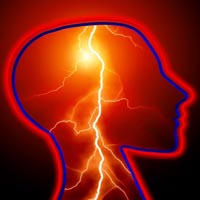Clinical and socio-demographic factors associated with electroencephalographic abnormalities in children with epilepsy

Accepted: 14 August 2021
Appendix: 43
All claims expressed in this article are solely those of the authors and do not necessarily represent those of their affiliated organizations, or those of the publisher, the editors and the reviewers. Any product that may be evaluated in this article or claim that may be made by its manufacturer is not guaranteed or endorsed by the publisher.
Authors
Electroencephalography (EEG) makes critical contribution to the management of epilepsies. Few studies have examined the clinical and socio-demographic factors that are likely to predict finding an abnormal or epileptiform EEG in children with epilepsy (CWE). Knowledge of clinical variables and socio demographic factors that determine EEG abnormalities may inform careful selection of children for EEG and improve the cost-effectiveness of this investigation. Therefore, this study was carried out to assess the relationship between the occurrence of EEG abnormalities and certain factors such as age, gender, clinical neurologic state, seizure type, anti-epileptic drug therapy, activation procedure such as sleep and etiology of epilepsy in children who had EEG in Owerri, Nigeria. The clinical and EEG records of children who had EEG at a tertiary referral center over a period of two years were retrospectively reviewed. Relevant data including demographics, clinical neurologic state, seizure type, EEG findings were extracted. Statistical analysis was used to determine association between categorical variables. The variables noted to be significantly associated with abnormal EEG recordings were the presence of abnormal neurologic findings (p=0.020) and etiology of epilepsy (p=0.045). There were no significant association between abnormal EEG findings and age (p=0.680), gender (p=0.802) and seizure types (p=0.157). The clinical neurological state and etiology of epilepsy in children were significantly associated with the occurrence of abnormalities and yield of interictal scalp EEG. Children with epilepsy who are neurologically abnormal or have multiple etiological factors could be prioritized in EEG appointments in resource-poor settings. Further research in children with epilepsy is needed to confirm these findings.
How to Cite
PAGEPress has chosen to apply the Creative Commons Attribution NonCommercial 4.0 International License (CC BY-NC 4.0) to all manuscripts to be published.

 https://doi.org/10.4081/acbr.2021.154
https://doi.org/10.4081/acbr.2021.154



